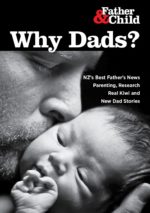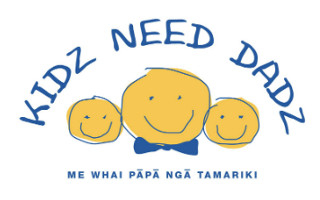Tax Logic – IRD Style
By Harald Breiding-Buss
How many taxes a married couple with children pays not only depends on how much they earn, but also who earns it.
Result: New families are hit the hardest.
Taxes are a means of paying for services we as a community decide should be paid for by the members of the community according to their earning power.
Families do get some tax advantages compared to couples without children, Notably they get Family Assistance, which now consists of Family Support and the Independent Family Tax Credit which was introduced two years ago and is available only to families with an income other than from Social Welfare or Income Support.
Of course, Family Assistance is part of the social welfare system and therefore depends on your income.
While it is everyone’s choice to have or not to have children, as a society we cannot afford not to have any.
After all, the children of today provide the retirement income of tomorrow, even for those who do not have children and even for those who are privately insured. For without children the economy will shrink and not provide a return on the investments that these private companies have made on your behalf.
Some authors have suggested that people who raise children are actually providing a service for those who do not, and this service, like everything these days, should be paid for.
The New Zealand tax system contains a striking oddity that significantly disadvantages young families.
For some reason couples are taxed individually, whereas all state assistance is means-tested on the incomes of both partners, This is a contradiction which fiscally works in favour of the government:
A non-working person married to someone earning a full-time wage will not get any unemployment (or any other) benefit as it is expected that the earning partner supports the other. However the earning individual is taxed as though they would be living alone!
If this couple has children, any Family Assistance is based on the income of the whole family, not of the primary caregiver alone.
So Inland Revenue, which pays Family Assistance, recognises that parenting is an economic partnership. But the same Inland Revenue Department does not recognise this partnership when it comes to taxing.
Because of this irregularity, a couple where both are earning $20,000 per year is significantly better off than if only one partner was working and bringing home $40,000. A $40,000 income is subject to a higher tax rate, while both $20,000 incomes do not even pay the current 21.5% lower tax rate, as they are entitled to a rebate. The difference is worth about $1500 a year or nearly 30 dollars a week.
This affects especially young families because most will live on only one income for a few years, perhaps with a small contribution by the partner who stays home, This is just one example that shows how individual income tax does not make sense once children come into the picture.
In fact there is no scenario imaginable where a couple with children would actually save taxes under individual taxation compared to family taxation.
The reasons for individual taxation have nothing to do with recognising people as individuals – or let alone the economic independence of the at-home partner, as is sometimes argued, but is purely fiscal. If the government would recognise economic independence it would have to pay the DPB to the at-home partner of a working person.
Last year a Hamilton couple formed a group under the name “Parents as Partners” lobbying for the right of parents to register with IRD as a partnership and file joint tax returns.
Group co-ordinator Christina Reymer and her partner Rob Powell even went to the Taxation Review Authority to gain this right (which already exists for individuals entering a business partnership), claiming that they have formed a “business” partnership with the purpose to raise a family.
But the judge dismissed the case – “as desirable as it may be to allow husbands and wives to divide their income for tax purposes” – because the law simply does not allow for it.
The group wants to promote “the value of the parent-at-home” and believes that “in the context of a recognised partnership they would achieve economic visibility”, According to their promotional pamphlet, “the tasks of income earning and caregiving are of equal importance for the family and parents should be free to divide those tasks between them as they see fit, without economic constraints on one or other choice”.
This is certainly along the lines of what the founders of the Father & Child Trust thought as well, but the group’s newsletters are written from a women’s rights perspective as though fathers would not significantly contribute to the upbringing of their children.
The launch of their campaign, for example, was made to coincide with Mothers Day. If anything, however, this is an indication how children’s issues have become mixed-up with women’s issues – often with the best of intentions, as in this case.




